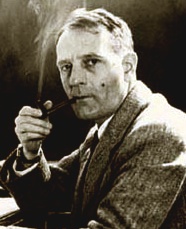Hubble’s Law

In 1929, Edwin Hubble noted a remarkable relationship. He obtained the spectra of many galaxies and calculated the relative velocities of the galaxies from the Doppler shifts of spectral lines. All of the galaxies (except for a couple of the closest) displayed redshifts and thus have recessional velocities.
Hubble then correlated the velocities of the galaxies with their distances and found a linear relation. The greater the distance to a galaxy – the larger its velocity of recession. Hubble had discovered that the universe is expanding. This phenomena is expressed as:
known as Hubble’s Law where the slope of the best fit line through the data is known as the Hubble Constant. Historically, there has been considerable debate over the Hubble constant due to uncertainty in the galaxy data. Galaxies that are close to us have peculiar motions (motions about the center of gravity of their particular group of galaxies) which can be a large fraction of their recessional velocities due to the expansion of the universe. While galaxies that are very far away, often have rather uncertain distances. Thus, there have been “spirited” debates over the value of H0. Today, most astronomers accept a value of 67±4 km·s/Mpc.
However, as has often been the case in our story of distance indicators, there are complications. The Hubble constant is not really constant. It has the same value everywhere in the universe at one instant, but it does change over time. So when we look at distant galaxies, we are effectively looking into the past due to the time is has taken light to travel to us. So Hubble’s law is useful if you know the velocity of recession for a galaxy and want a rough estimate of its distances. However, the varying Hubble Constant makes accurate application very difficult.
